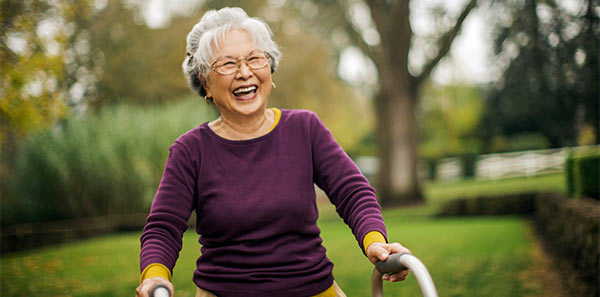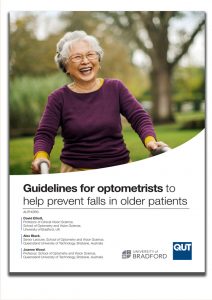1:30min

By Helen Carter
Journalist
Guidelines to help optometrists prevent falls in older patients have been developed by Australian and UK optometrists.
Experts say optometrists have a pivotal role in falls prevention and these guidelines guide prescribing, patient management and provide important recommendations based on current evidence.
Professor Joanne Wood and Dr Alex Black from Queensland University of Technology’s School of Optometry and Vision Science collaborated on the project with Professor of Clinical Vision Science David Elliott from the School of Optometry and Vision Science, University of Bradford, UK.
Optometry Australia has published the guidelines on its new website to enable widespread dissemination and access among optometrists. They will be updated as new evidence emerges.
Professor Wood said: ‘Research evidence shows that vision is linked to balance and falls. Importantly, many vision problems linked to increased falls risk can be avoided or are reversible.
‘Optometrists have a key role in falls prevention of their older patients through awareness of their patients’ falls history, appropriate detection of visual impairment and prescribing refractive corrections that minimise the risk of falling.’
Professor Elliott, who co-wrote the falls guidelines for the British College of Optometrists and has extensive experience in vision and falls, visited QUT in 2017 and worked with Professor Wood and Dr Black on collaborative vision, balance and falls research projects.
Dr Black said: ‘As a result of this collaboration and from discussions conducted during this sabbatical visit, we realised that there was little material available in Australia to highlight the important contribution of vision to falls risk and also for guiding optometrists’ prescribing and management of their older patients to minimise falls risk.
‘Optometrists play an important role in the health care of older patients, and contribute to their health and well-being through best-practice vision care, which incorporates strategies to minimise the negative impact of falls and injury.’

Falls guidelines’ authors, L-R, Professor David Elliott, Professor Joanne Wood and Dr Alex Black at a recent conference in Vancouver.
Avoid large changes in refractive error
Professor Elliott said: ‘The research evidence suggests that large changes in refractive correction can increase falls risk, such as after cataract surgery, and thus prescribing large changes in refractive error (>0.75D) should be avoided.
‘Falls risk can be increased following large changes in refractive correction due to a variety of factors including distortion and magnification effects and increased dizziness linked to changes in the vestibulo-ocular reflex with the change in magnification.
‘Thus, it is important to provide advice to patients that these effects may increase their falls risk, and consider a conservative approach to their refractive management.
‘The ‘tuck the chin in strategy’ can be recommended to bifocal/PAL wearers to avoid trips on steps and stairs, but patients tend not to use it long-term.’
Tips for optometrists from the guidelines include:
- Adapt patients’ case history to better identify those at risk of falling.
- Promote regular eye examinations for those at higher risk of falling to facilitate earlier detection of visual impairment and earlier referral for cataract surgery.
- Modify your pattern of prescribing to minimise the risk of falling, particularly in patients at higher risk of falling.
- Avoid large changes in refractive error (>0.75D).
- Take into account a patient’s level of falls risk when selecting lens types, such as avoiding monovision or bifocals/PALs, particularly if a patient currently wears single vision glasses.
- Prescribe single vision distance glasses for outdoor wear for those who are active which reduces falls risk, or prescribe a low add bifocal/PAL for outdoor wear that provides ‘spot reading’ but safer mobility and gait.
- Refer patients with visual impairment to appropriate health services to provide home hazard improvements and help patients connect with health services for non-vision care assessment.
- Maintain awareness of the literature linking vision and falls to best manage patients and reduce their falls risk.

Tagged as: Clinical practice guides, Patient management, Universities